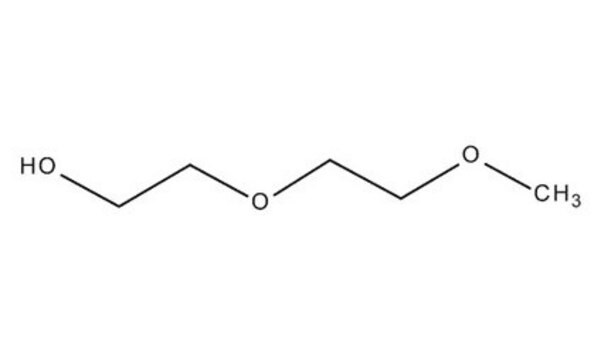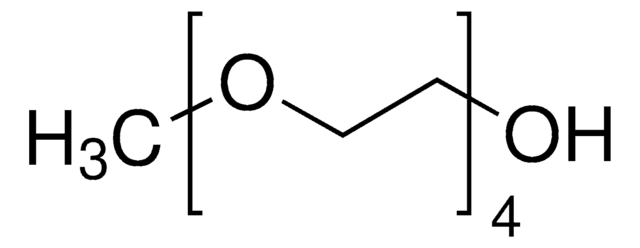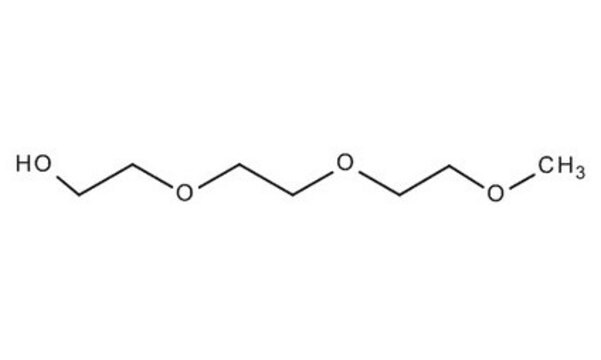568554
Tri(ethylene glycol) monoethyl ether
technical grade
Synonym(s):
Triethylene glycol monoethyl ether, Ethyltriglycol
About This Item
Recommended Products
grade
technical grade
Quality Level
refractive index
n20/D 1.438 (lit.)
bp
256 °C (lit.)
density
1.020 g/mL at 25 °C (lit.)
SMILES string
CCOCCOCCOCCO
InChI
1S/C8H18O4/c1-2-10-5-6-12-8-7-11-4-3-9/h9H,2-8H2,1H3
InChI key
WFSMVVDJSNMRAR-UHFFFAOYSA-N
Looking for similar products? Visit Product Comparison Guide
Related Categories
Storage Class Code
10 - Combustible liquids
WGK
WGK 3
Flash Point(F)
269.6 °F - closed cup
Flash Point(C)
132 °C - closed cup
Personal Protective Equipment
Regulatory Listings
Regulatory Listings are mainly provided for chemical products. Only limited information can be provided here for non-chemical products. No entry means none of the components are listed. It is the user’s obligation to ensure the safe and legal use of the product.
FSL
Group 4: Flammable liquids
Type 3 petroleums
Hazardous rank III
Water soluble liquid
JAN Code
568554-100ML:
568554-VAR:
568554-BULK:
568554-2L:
Choose from one of the most recent versions:
Already Own This Product?
Find documentation for the products that you have recently purchased in the Document Library.
Customers Also Viewed
Global Trade Item Number
| SKU | GTIN |
|---|---|
| 568554-100ML | 4061832596969 |
| 568554-2L | 4061832596976 |
Our team of scientists has experience in all areas of research including Life Science, Material Science, Chemical Synthesis, Chromatography, Analytical and many others.
Contact Technical Service













